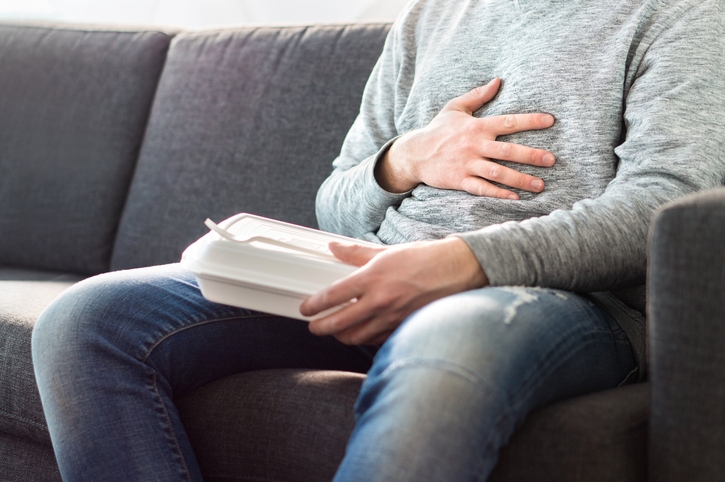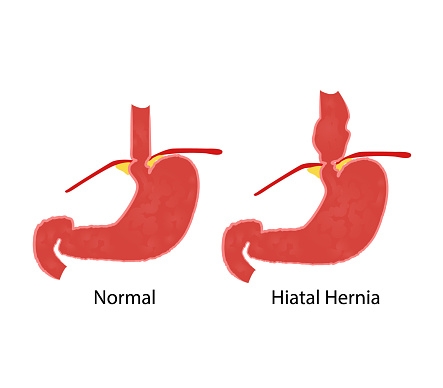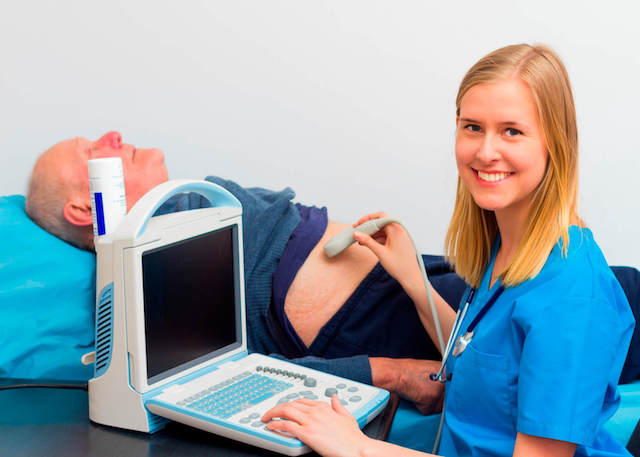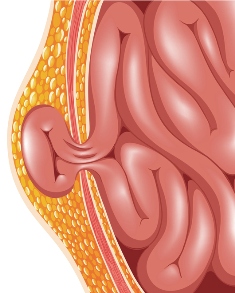What Does an Abdominal Hernia Feel Like?
An abdominal hernia (also called a ventral hernia) occurs when a small opening develops in the muscles allowing the inner lining of the abdomen to protrude. An abdominal hernia may cause mild to moderate discomfort or there may be no symptoms at all. Ventral hernias frequently develop in vulnerable areas of the abdominal wall such as your belly button or spots where you’ve previously had incisions for surgery. Abdominal hernias can be the result of one or more of the following factors:
- Aging
- Congenital conditions from birth
- Strain from chronic coughing, bowel movements, constipation, etc.
- Infection from previous surgeries
- Obesity
- Pregnancy
- Surgical openings or injuries
You may not know you have the condition, or you may notice the external signs of having a hernia which include a small bulge or pouch-like protrusion in the abdomen. Over time, a ventral hernia may get larger if it is not repaired.
What Does a Hernia In Your Stomach Feel Like?
In this article, we’ll discuss the question, “What does a hernia feel like?” and “What are the different signs of having a hernia?”
Symptom 1: A Bulge
One of the main symptoms of an abdominal hernia is a soft bulge in your stomach. This pouch or bubble is where the abdominal lining, and sometimes other abdominal contents have pushed through the muscle wall, causing a visible bulge. Typically, these lumps are small, and they frequently vanish when pressed on or when lying down.
Symptom 2: Pain
Most of the time, abdominal hernias don’t involve much pain. However, you may feel some pain, pressure, or a tugging sensation when straining or lifting. More severe pain or discomfort may indicate that your hernia has become strangulated, cutting off circulation to vital tissues and requiring surgery. This is an emergency situation and requires immediate medical attention.
If you notice the first two signs of having a hernia, and you then develop any of the other hernia symptoms below, seek medical attention right away.
Symptom 3: Constipation
A strangulated hernia can also cause gastrointestinal problems, such as constipation, difficulty passing gas, and bloody stools. If this occurs, see a doctor as soon as possible.
Symptom 4: Redness and Inflammation
Another symptom of a strangulated abdominal hernia is inflammation in the affected area. It may appear dark red and feel tender to the touch.
Symptom 5: Nausea and Vomiting
If the hernia cuts off circulation to the tissues poking through the abdominal wall, you may experience nausea and vomiting. If this occurs, you may have a strangulated hernia and need immediate medical attention.
Types of Abdominal Hernias
Abdominal hernias come in various forms depending on location and root cause.
Umbilical Hernias
An umbilical hernia occurs right around the belly button where a weak point in the abdominal wall allows some fat or intestine to come through. This generally does not affect blood flow unless it becomes strangulated which happens only in extremely rare cases, if the hernia becomes strangulated (meaning the blood supply to the herniated tissue is cut off), it can indeed affect blood flow to that portion of the intestine or fatty tissue. Strangulated hernias are a serious condition and require immediate medical attention.
Epigastric Hernias
Weak points in the belly between the navel and your breastbone may let bits of fat poke through, causing an epigastric hernia. Often, epigastric hernias don’t cause noticeable symptoms, but they sometimes become large enough to warrant surgery.
Incisional Hernias
Areas weakened by incisions or infections from surgery may result in incisional hernias. Often, they are larger than other types of hernias, causing noticeable pain.
Spigelian Hernias
Spigelian hernias are rarer than other types because they don’t occur under layers of fat. Instead, they develop in the midst of abdominal muscle tissue. Spigelian hernias are often smaller and harder to detect, and they have a higher risk of developing into strangulated hernias.
Treating an Abdominal Hernia
If left untreated, an abdominal hernia can grow larger, increasing the level of discomfort. In extreme cases, it may become strangulated, creating severe health issues and requiring immediate treatment.
The only way to treat an abdominal hernia is through surgery.
Traditional Abdominal Hernia Repair
Hernias are traditionally treated with open surgery, in which an incision is made in the abdominal wall. The tissue is then either stitched shut or (more commonly) reinforced with mesh.
Laparoscopic Hernia Repair
A minimally invasive approach makes use of a laparoscope, which is a tiny camera on a long tube. The camera is inserted through a small incision to let your surgeon see the hernia from the inside. A few other smaller incisions are made, and the mesh is placed.
Laparoscopic hernia repair is often preferred since it requires much smaller incisions. You’ll recover more quickly, experience less pain, and have a lower chance of infection. However, not all patients are candidates for laparoscopic hernia surgery. To see if laparoscopic hernia repair is right for your type of hernia, contact Dr. Malladi for an appointment.
Tips on How to Prevent an Abdominal Hernial
Often, abdominal hernias are preventable through the following methods:
- Exercise to strengthen abdominal muscles and lose weight.
- Eat healthy. Cut calories and increase protein and nutrients.
- If you smoke, quit.
- Don’t lift more than you can physically handle.
- Eat plenty of fiber to prevent abdominal straining from constipation.
If you’ve already had hernia repair surgery, these prevention methods are still important. There is a small chance your hernia could return.
If you think you may have an abdominal hernia, Dr. Malladi provides the compassionate, individualized care you need. For more information or to schedule an appointment, contact us today.







